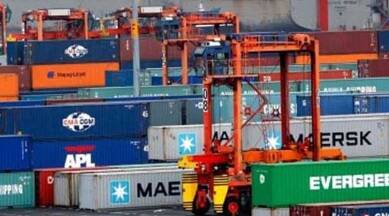Live Classes

The uncertain global economic environment calls for proactive policy actions to boost exports.
The year 2021 was a record one for trade despite the pandemic. In terms of volumes, merchandise trade rose 9.8 per cent, while in dollar terms, it grew 26 per cent. The value of commercial services trade was also up 15 per cent. India has had a good export run in line with global trends, witnessing record goods exports of $419 billion, while touching $250 billion in services exports. However, global growth forecasts have now been pared down. World merchandise trade volume is expected to grow at 3 per cent in 2022 (down from 4.7 per cent previously) and 3.4 per cent in 2023 according to the WTO. Note, world merchandise trade volume grew at twice the rate of world GDP at market exchange rates in the two decades before the global financial crisis. However, this ratio between trade and GDP growth will fall to 1.1:1 in 2022 and 2023. Thus, slower global growth, an adverse geopolitical environment, the shadow of recurring waves of the pandemic and prolonged supply chain issues are likely to weigh on export growth this year. This uncertain global economic environment calls for proactive policy actions as exporters look to tap into newer opportunities. Ukraine and Sri Lanka are major exporters of agricultural products and the vacuum created by their limited presence in global trade will open up agricultural export opportunities for India. This will not only spur overall exports but will also help to support the recovery of the agrarian economy through higher realisations. Apart from Europe, Africa’s food security depends on wheat supplies from the two countries at war. As many as 25 African countries import more than one-third of their wheat from Russia and Ukraine and for 15 of them, the share exceeds 50 per cent. Sri Lanka is also a major player in the global tea market and produces around 300 million kg annually. Almost 98 per cent of its annual production is exported. India, the secondlargest producer of tea with an annual production of 900 million kg, is in a good position to exploit the opportunity and fill the gap.
Download pdf to Read More